|
|
|
Sort Order |
|
|
|
Items / Page
|
|
|
|
|
|
|
| Srl | Item |
| 1 |
ID:
178689
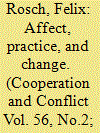

|
|
|
|
|
| Summary/Abstract |
How do practices change? To approach this in practice theory (PT) is a widely debated question. This article brings PT in conversation with the study of emotions in International Relations by considering the role of affect in practice changes. For it is affect that permeates the placiotemporal and bodily constellations during practice performances, continuously provoking changes in and through practices. In initiating this conversation, this article adds to current PT literature by arguing that world political transformations not only find their origin in external conditions, identified as such through individual reflection, but also in affective dynamics of the everyday. To elaborate this more theoretical argument, this article evolves against the empirical backdrop of dancing as an everyday international practice at the Congress of Vienna (1814–1815). Affect that permeated dances in Vienna not only substantiated changes in this practice but, with the waltz replacing the minuet as the preferred dance among international political decision-makers, also changes through it occurred. While the minuet embodied collective sentiments of a transboundary European elite, the waltz helped to further national imaginations of world politics.
|
|
|
|
|
|
|
|
|
|
|
|
|
|
|
|
| 2 |
ID:
144238
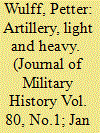

|
|
|
|
|
| Summary/Abstract |
The artillery revolution of the nineteenth century came about partly through collaboration between southern and northern Europe. Their outlooks were quite different. In the south, the Kingdom of Sardinia-Piedmont needed to go on the offensive beyond its borders to achieve its aim of creating a united Italy. In the north Sweden had the defensive aim of protecting its borders against an invading enemy. This situation called for two different kinds of artillery—light and movable in the south; heavy and powerful in the north. How the two countries, in spite of their different outlooks, came to be involved in a joint development of path-breaking artillery technology is the subject of this article.
|
|
|
|
|
|
|
|
|
|
|
|
|
|
|
|
| 3 |
ID:
114010
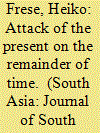

|
|
|
|
|
| Publication |
2012.
|
| Summary/Abstract |
Using the example of a local chronicle from early nineteenth-century Orissa, this article discusses the structure, content and strategy of selected historiographical texts of the period. Contemporary events and the immediate past can be identified in the texts and indeed govern their plots, reflecting a new representation of reality in historiography of this kind. Thus, the changing hegemonic order of such texts-where content begins to override form-mirrored the changing political world. Colonial discourse started to soak into Indian historiography.
|
|
|
|
|
|
|
|
|
|
|
|
|
|
|
|
| 4 |
ID:
175860
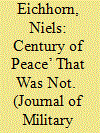

|
|
|
|
|
| Summary/Abstract |
When historians study the short nineteenth century (1815–1914), they usually see the century as one of peace. The assumption rests on the perception that European Great Powers did not engage in major wars with each other. Contrary to such assumptions though, the nineteenth century was a violent period with frequent and often bloody localized or regional wars. Some of these wars involved one or more of the Great Powers. Especially the middle decades of the nineteenth century witnessed a series of wars. Despite the massive bloodletting during the American Civil War, conflicts in Asia and South America were far more devastating. This essay demonstrates that the middle decades of the nineteenth century witnessed ruinous conflicts as military technology exceeded battlefield tactics with many soldiers suffering deadly consequences.
|
|
|
|
|
|
|
|
|
|
|
|
|
|
|
|
| 5 |
ID:
141073
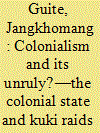

|
|
|
|
|
| Summary/Abstract |
This paper examines the colonial representation of tribal raids in the Northeast frontier of India and argues that, rather than being the ‘lawless and predatory habits of the savage hill tribes’, it was an expression of hill politics. The Kukis raided British territory when they discovered that an extension of the colonial boundary threatened their very existence as an independent state-evading population. It traces how the Kukis re-ethnicized themselves in the hills by evolving a system that is state-repellent, protected by a vast strip of forested jungle around their settlements commonly known as the ‘hunting ground’. It locates the ‘raid’ in the context of the difference in the perception of space and territoriality between the colonial state and indigenous polities. Colonial spatial ideology and its hill-valley binary are seen to play a vital role in animating tension on the frontier. The raid is thus understood as the ultimate weapon of resistance against an established state by an independent ‘not-a-state-subject’ people in defence of their autonomy and essentially represents non-state practices against state appropriations. Instead of being ‘unruly’, the raid is seen as a form of organized and premeditated resistance based on the consciousness of the hillmen's lived world order.
|
|
|
|
|
|
|
|
|
|
|
|
|
|
|
|
| 6 |
ID:
159394
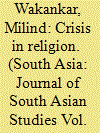

|
|
|
|
|
| Summary/Abstract |
The essay tries to understand how conversion to Christianity can transform language and its rhetorical possibilities inwardly. In the case of Jyotirao Phule, who was not a convert but was a critic of caste distinctions in nineteenth-century Western India, this meant that Marathi could now be used to uncover the link between Hindu apologetics and Brahmanism. Here I argue that the ‘humble’ Marathi used in missionary tracts made possible the emergence of the ‘I’ of the convert, and pushed ‘religion’ into the gap opened up in social life by a crisis of values, a crisis productively instrumentalised by Phule.
|
|
|
|
|
|
|
|
|
|
|
|
|
|
|
|
| 7 |
ID:
152306
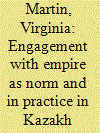

|
|
|
|
|
| Summary/Abstract |
This article offers an analysis of the Kazakh nomadic political culture of the 1820s–30s with focus on two issues: (1) service and loyalty as elements of Kazakh engagement with the Russian Empire; and (2) the place in local political practice of the regional administrative offices (diwans) created for Middle Horde Kazakh nomads in 1822. While Russia’s goal was ‘bureaucratization’ and creation of ‘order’ in the steppe, in part through directing nomads to engage with the diwan and its elected Kazakh officials, Kazakh political actors variously embraced and rejected formal structures, and continued to define relevant norms and practices of governance. The analysis challenges both statist and nationalist narratives of nineteenth-century Kazakh steppe history by acknowledging the complexities of the Kazakh nomadic experience of empire-building. The ultimate purpose is to suggest new approaches for interpreting historical change throughout the nineteenth century and into the twentieth.
|
|
|
|
|
|
|
|
|
|
|
|
|
|
|
|
| 8 |
ID:
151644


|
|
|
|
|
| Summary/Abstract |
This article considers what the nineteenth century can tell us about the nature of great power management under conditions of ambiguity in relation to the holders of great power status. It charts the development of an institutionalised role for the great powers as managers of international society but with a specific focus on the mutual recognition, and conferral, of status. Such a focus highlights the changing, and sometimes competing, perceptions of not only which states should be thought of as great powers, but also therefore whether the power structure of international society remained multipolar or shifted towards bipolarity or even unipolarity. The article argues that a ‘golden age’ of great power management existed during a period in which perceptions of great power status were in fact more fluid than the standard literature accounts for. This means that predictions surrounding the imminent demise of the social institution of great power management under an increasingly ambiguous interstate order today may well be misplaced.
|
|
|
|
|
|
|
|
|
|
|
|
|
|
|
|
| 9 |
ID:
131899
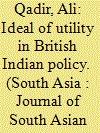

|
|
|
|
|
| Publication |
2014.
|
| Summary/Abstract |
The now natural ideal of defining higher education through its societal utility is a relatively recent historical formation, and in the case of South Asia, its construction is entangled with the colonial history of the institutionalisation of modern higher education in the nineteenth century. Drawing on Robert Young's history of the Bentham-inspired 'chrestomathic' University of London, this article reviews the shifting construction of practicality in British Indian higher education policy in the formative period between 1835 and 1904. The article underlines the continuities and ruptures over time in the policy rhetoric of utility as a normative ideal and points out some implications for understanding colonialism
|
|
|
|
|
|
|
|
|
|
|
|
|
|
|
|
| 10 |
ID:
120729
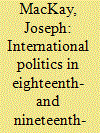

|
|
|
|
|
| Publication |
2013.
|
| Summary/Abstract |
Using historical analysis of relations between city-states and other international actors in Central Asia during the eighteenth and nineteenth centuries, this article evaluates new structural theories of international politics, chiefly those of David Lake and Jack Donnelly. Pre-colonial Central Asia offers a usefully tough case for structural theories, since it so little resembles the modern international order that these theories were developed to describe. Empirically, the article proceeds by evaluating the region's city-states' relations with three groups of actors: one another; neighbouring empires; and the many non-state actors present at the time. It concludes with an assessment of the merits of the new structuralisms, and a discussion of their value for constructivist international-relations theories of international change.
|
|
|
|
|
|
|
|
|
|
|
|
|
|
|
|
| 11 |
ID:
139587
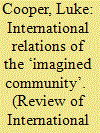

|
|
|
|
|
| Summary/Abstract |
Benedict Anderson's Imagined Communities has long been established as one of the major contributions to theories of nations and nationalism. Anderson located the rise of national identities within a long-evolving crisis of dynastic conceptions of identity, time, and space, and argued print-capitalism was the key cultural and economic force in the genesis of nations. This article offers a critical appropriation and application of Anderson's theory through two steps. Firstly, it evaluates the conceptual underpinning of his approach through an engagement with recent scholarship on the ‘theory of uneven and combined development’. The fruits of this interchange provide a deeper analytical framework to account for what Anderson calls the ‘modularity’ of national identity, that is, its universal spread across the globe. Modularity is now reconceptualised as a product of combined development with its causal efficacy derived from the latent dynamics of a geopolitically fragmented world. The latter gave shape and form to the new national communities. Secondly, this revised framework is applied to the emergence of Chinese national identity in the late nineteenth century. This allows Chinese nationalism to be recast as an ideological amalgam of indigenous and imported elements that emerged out of the crisis-ridden encounter between Imperial China and Western imperialism in the nineteenth century.
|
|
|
|
|
|
|
|
|
|
|
|
|
|
|
|
| 12 |
ID:
115334
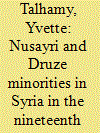

|
|
|
|
|
| Publication |
2012.
|
| Summary/Abstract |
In October 1831 Muhammad Ali Pasha's army under the command of his son, Ibrahim Pasha, attacked Greater Syria, where he faced little resistance. By May 1832 Muhammad Ali and the Sultan signed the K¨tahya peace treaty, and the region of Greater Syria became formally part of Muhammad Ali's domains, in which he decided to implement several reforms. One of these reforms was disarmament and conscription. As a result several revolts erupted in the region of Greater Syria; the two most important revolts were those of the Nusayris and the Druze, two heterodox religious minorities. The Nusayri revolt erupted in September 1834 and lasted for nine months until the rebels were fiercely subdued, disarmed and conscripted. After subduing the Nusayris in October 1835, the Egyptians conscripted the Druze of Mount Lebanon. Although the Druze resisted the orders, they lacked leadership and thus were easily disarmed and conscripted. The main revolt of the Druze was in November 1837 in the Hawran region, where the Druze put up a fierce fight against the Egyptians. Even though the Druze were subdued after almost nine months, they obtained a lenient agreement in which they were released from conscription and only partly disarmed.
|
|
|
|
|
|
|
|
|
|
|
|
|
|
|
|
| 13 |
ID:
193011


|
|
|
|
|
| Summary/Abstract |
In Fi al-adab al-sahyuni (On Zionist Literature, 1967)Footnote1, the Palestinian writer and Popular Front for the Liberation of Palestine (PFLP) spokesperson Ghassan Kanafani provides an analysis of Zionist literary production from the early nineteenth century through the mid-twentieth century, situating it in a broader schema of Western imperialism, settler colonialism, and dispossession in Palestine. Through a treatment of the early Zionist texts, Kanafani’s study traces the evolution of literary representations of the Jewish subject and explores their utility in repudiating integration and advancing racial supremacist logics. The Zionist works in question venerate different relationships to land—extractive, romantic, fraudulent—in contrast to those of Palestinian literary and oral traditions; the former are connected to the ongoing, material efforts of colonizing Palestine. Kanafani’s study was drafted in Beirut and is a reflection of the broader sweep of Arab nationalist and anti-colonial cultural production during the 1960s and 1970s, which was targeted by an anti-communist West. These experiences were formative for Kanafani’s intellectual project, which sees literary criticism as a revolutionary tool and a direct extension of armed resistance, whereby a cultural reconstitution can be used in service of liberating both Palestinian land and people. Kanafani’s study suggests that the “weapons” of literary production will be most effectively brandished by the Arab youth who lead the struggle against Zionism.
|
|
|
|
|
|
|
|
|
|
|
|
|
|
|
|
| 14 |
ID:
127029
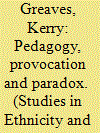

|
|
|
|
|
| Publication |
2013.
|
| Summary/Abstract |
The last two decades of the nineteenth century witnessed an apparent revolution in art education in Denmark with the establishment of the 'Free Schools', a group of alternative schools that provided students with a choice other than the Royal Academy. The most important of these schools, the Kunstnernes Studieskole (Artists' Study School, established in 1882), was subsidised by the government and headed by Laurits Tuxen, P.S. Krøyer, and Kristian Zahrtmann, Academy-trained artists who modeled the school's education on the French atelier system. The debate that formed the Study School was at its core one of democratization, which was perceived to be synonymous with international modernism. Yet its artists functioned within a network of fluid roles designed to openly augment the existing pedagogical structure from within - a specifically Danish phenomenon. This article proposes an alternative framework for late-nineteenth-century Danish art education systems that situates the Study School within the context of Danish culture and as an extension of the social democratic tendencies proliferating at this time, which were significantly influenced by the preacher N.F.S. Grundtvig. Danish artists' actual situation had more to do with assimilating a myriad of local and international impulses into a specifically Danish version of modernism.
|
|
|
|
|
|
|
|
|
|
|
|
|
|
|
|
| 15 |
ID:
185879
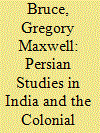

|
|
|
|
|
| Summary/Abstract |
The establishment of the colonial universities in India was a watershed moment for the history of Persian studies on the subcontinent. Despite the rise of English and vernacular literatures in the nineteenth century, Persian remained an essential language of instruction in colonial colleges, with generations of Indian students studying Persian to pass university examinations. By closely studying university calendars and courses, this article demonstrates that the colonial universities created and sustained an ecosystem for Persian studies throughout the colonial period, as Orientalists and increasingly Indian Persianists continued to invest in Persian instruction and curricular development. The breadth, diversity, refinement, and expansion of Persian college curricula—which included texts from the classical Persian canon and contemporary literature written by Iranians and Indians—testify to the continued fluidity and dynamism of Persian studies throughout the period. Such a phenomenon demonstrates that the debates and engagement around the Persian language in colonial India contradict its depiction as an obsolete or entirely classical language, and also that colonial college curricula influenced which texts were edited, compiled, printed, translated, and commented upon.
|
|
|
|
|
|
|
|
|
|
|
|
|
|
|
|
| 16 |
ID:
145586
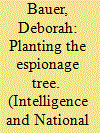

|
|
|
|
|
| Summary/Abstract |
Intelligence in France evolved as it professionalized at the end of the nineteenth century, led by determined individuals within the French army. However, in the centuries prior to the professionalization of espionage and counterespionage, military men rejected intelligence, viewing the practice with skepticism and disdain. This article asserts that there was a change in views towards espionage, particularly among the military, beginning in the middle of the nineteenth century. As the army went from eschewing intelligence to embracing it and taking the lead in its practice, the nature of intelligence work in France consequently reflected the goals and aims of the army, prioritizing military intelligence over others.
|
|
|
|
|
|
|
|
|
|
|
|
|
|
|
|
| 17 |
ID:
190965
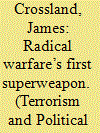

|
|
|
|
|
| Summary/Abstract |
This article retraces the forgotten legacy of a percussion triggered shrapnel scattering improvised explosive device (IED), known as the Orsini Bomb. Initially used in an attempt to assassinate Emperor Napoleon III in 1858, in the decades after, the Orsini Bomb was replicated, modified and deployed by regicides, insurgents and terrorists, and mythologised by the press as an omnipresent aspect of such forms of radical warfare. This article presents a “biography” of this unique IED, concluding, firstly, that Orsini’s design was an important point of reference in weapons manufacture for violent radicals even after the advent of dynamite in the 1860s and, secondly, that its reputation as a semiotic reference point for terrorist activity was enhanced by press reportage of its proliferation and use throughout the fin de siècle. In the final analysis, the Orsini Bomb became a transnationally recognised “brand” of weapon, synonymous with both assassination and insurgency. As such, the bomb’s reputation—often dwarfed in the historiography of political violence by dynamite—needs to be reconsidered.
|
|
|
|
|
|
|
|
|
|
|
|
|
|
|
|
| 18 |
ID:
159007
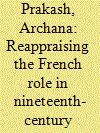

|
|
|
|
|
| Summary/Abstract |
This article explores the origins of French influence in Egyptian education by examining the circumstances under which Muhammad Ali Pasha (r. 1805–1848) sent two organized student missions to study in Paris over other European destinations. In the history of modern Egyptian education, French influence on educational institutions is linked to persistent French imperial interest following their occupation of Egypt (1798–1801). French involvement in education was not initially a government project, but rather evolved to become a government project by the end of the Pasha's rule. Using historical evidence, I show that the first mission was a personal venture of ex-Bonapartists who desired to keep the spirit of the Napoleonic expedition alive through informal cultural imperialism despite the Restoration government's disinterest. The French government's official involvement in the second student mission of 1844 was motivated by their colonial interests in North Africa. Previous historians have projected those motivations backwards on the earlier period and that Egyptian choice to make use of French expertise and knowledge was a contingent one.
|
|
|
|
|
|
|
|
|
|
|
|
|
|
|
|
| 19 |
ID:
161454
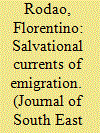

|
|
|
|
|
| Summary/Abstract |
This article analyses the changing significance of racial theories in the writings of Spanish emigrants in the late nineteenth century Philippines. Works by Antonio Cañamaque, Pablo Feced (Quioquiap), and Antonio Barrantes show how racialised understandings of colonial society in the Philippines evolved, from an initial dismissal of hybridism and rejection of mestizos to assertions of the innate superiority of the ‘white race’ and advocation of a rigid separation between local communities. These developments are considered in the context of the rising popularity of biological determinism alongside an influx of Spanish emigrants into the Philippines. The Spanish settlers used biological determinism to proclaim their role as the sole purveyors of both ‘progress’ and of a kind of egalitarianism. This article describes these debates and arguments, analyses their inconsistencies, and addresses the Filipino elite's responses to the settlers’ racial theories. These responses are read not simply as part of the development of Filipino nationalism, but as reflective of rivalries within the Spanish colonial community in the Philippines, where the locally born found additional reasons to support anticolonialism.
|
|
|
|
|
|
|
|
|
|
|
|
|
|
|
|
| 20 |
ID:
103129
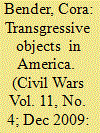

|
|
|
|
|
| Publication |
2009.
|
| Summary/Abstract |
Based on my own earlier theorising of 'mimesis at war', and taking up Simon Harrison's suggestion that trophies made from human body parts are best explained as 'transgressive objects', the article focuses on a particular trophy, a nineteenth century Cheyenne finger necklace. Its history illustrates that trophy-taking was part of a broader circulation of practices of war among native warriors and the American military in the West. Finally, trophy-taking made its way into the academic and scientific institutions that provide the discursive frame for present debates about war in anthropology and archaeology.
|
|
|
|
|
|
|
|
|
|
|
|
|
|
|
|
|
|
|
|
|